Plants, including those in your backyard, can be one of our most effective tools in battling climate change.

Evaluating Many Lomandra Types For Wet Feet Tolerance & Reliability
By Todd Layt
Lomandra are known for their drought tolerance, general toughness, and low maintenance. Having Lomandra thrive in periodically wet feet; allows them to be used in drainage swales and other depressed areas; it generally eliminates masses of dead plants from excessive irrigation in establishment and long term time frames; it often allows Lomandra to survive the summer rains in humid areas; and generally provides a buffer to make Lomandra far more reliable.
13 commonly available Lomandra confertifolia, fluviatilis, and longifolia types were tested in 2 trials for wet feet tolerance. Most Lomandra tested showed poor ability to survive in such conditions, however 2 types, namely Shara™ Lomandra fluviatilis ‘ABU7’ PBR and Evergreen Baby™ Lomandra labill. ‘LM600’ PBR had 100% survival with over 30 plants of each thriving.
Recent floods, and long periods of inundation, saw tens of thousands of Shara™ Lomandra survive and thrive. Until a decade ago, it was very hard to find Lomandra that coped well with periodic wet feet. Shara™ Lomandra changed that, showing a remarkable ability to cope with periodic inundation.
Now a smaller more compact form, Lomandra Evergreen Baby™ has been shown to perform just as well in periodic wet feet. Other previous testing for Lomandra hystrix showed some forms of this plant did well in periodic wet feet, such as Katie Belles™ Lomandra hystrix ‘LHBYF’ PBR and Tropic Cascade™ Lomandra hystrix ‘LHWP’ PBR.
The results clearly show the superior periodic wet feet tolerance of Shara™ Lomandra and Evergreen Baby™ Lomandra.
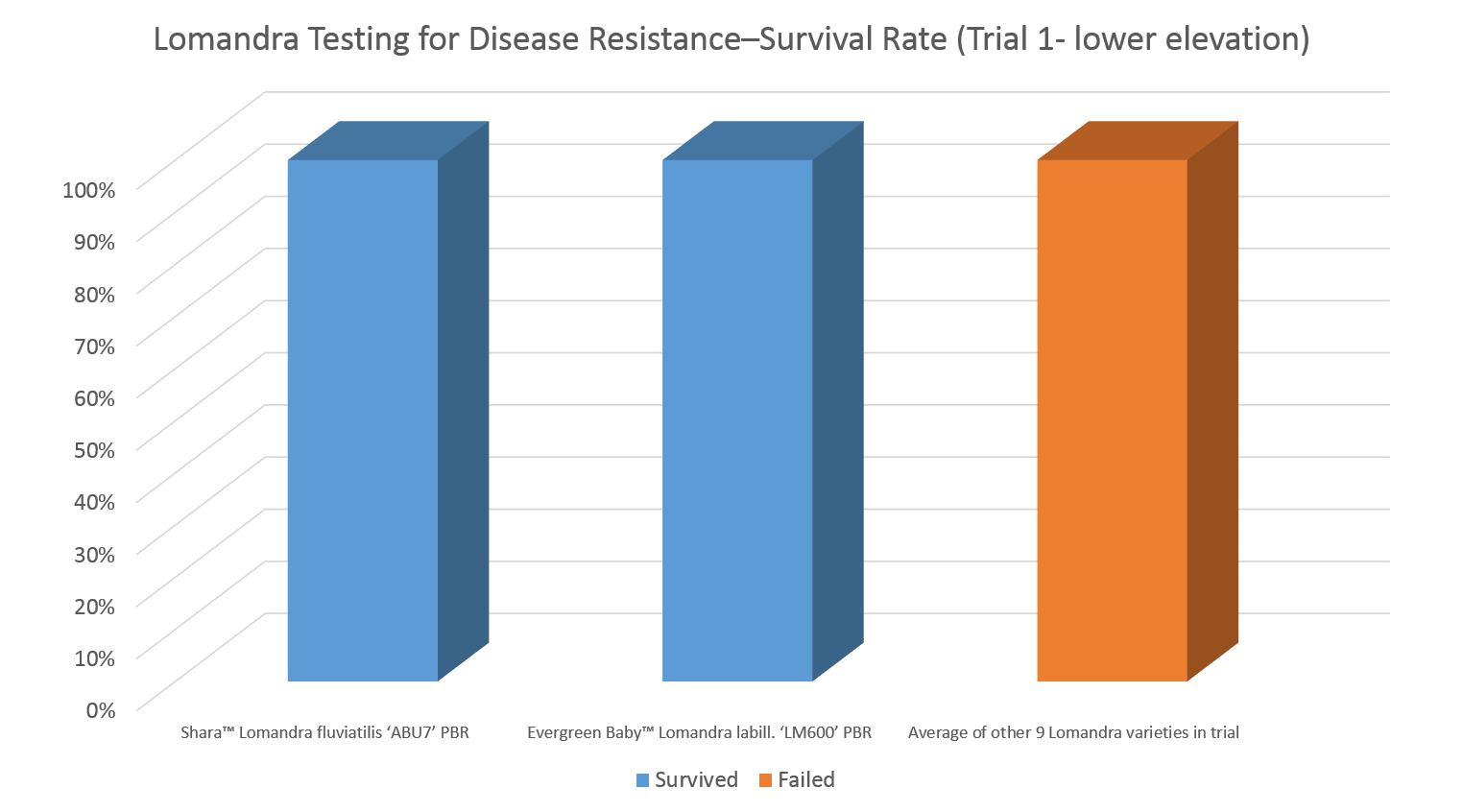
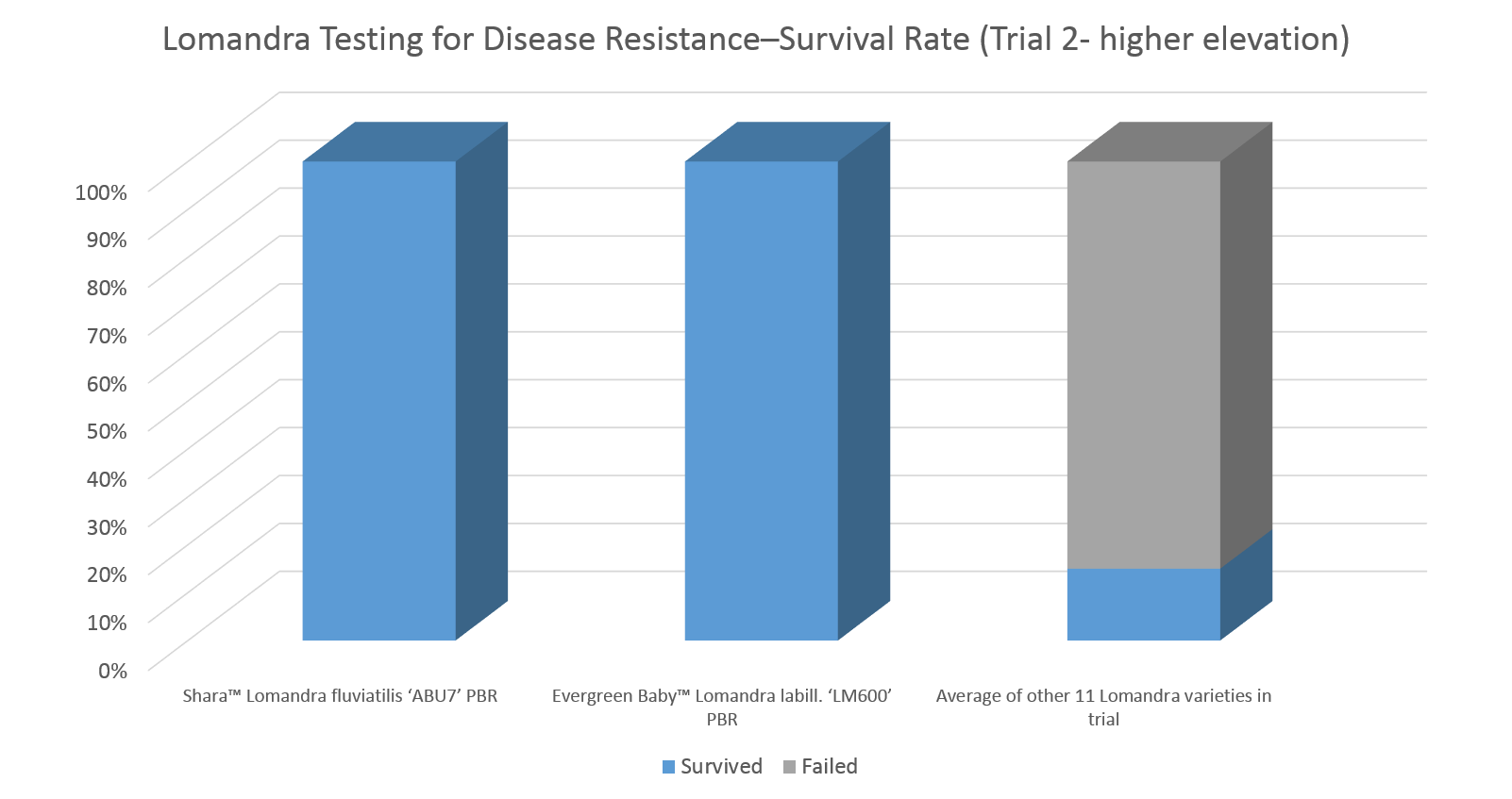
In another trial, 2 root rot treatments were tested.
Of the 24 Tanika® Lomandra longifolia ‘LM300’ PBR planted in wet feet, it showed the 8 with no treatment had approximately 25% of the plants survive, whilst all plants with phosphorous acid treatment died after 2 years, however 62.5% treated with the biologicals of Phyto Guard and Rhizovital survived.
Based on this result, a larger test of a number of wet feet intolerant Lomandra is needed, however this does indicate a problem with the standard horticultural treatment for Phytophthora, namely phosphorous acid, and does suggest Biological treatments perform better.
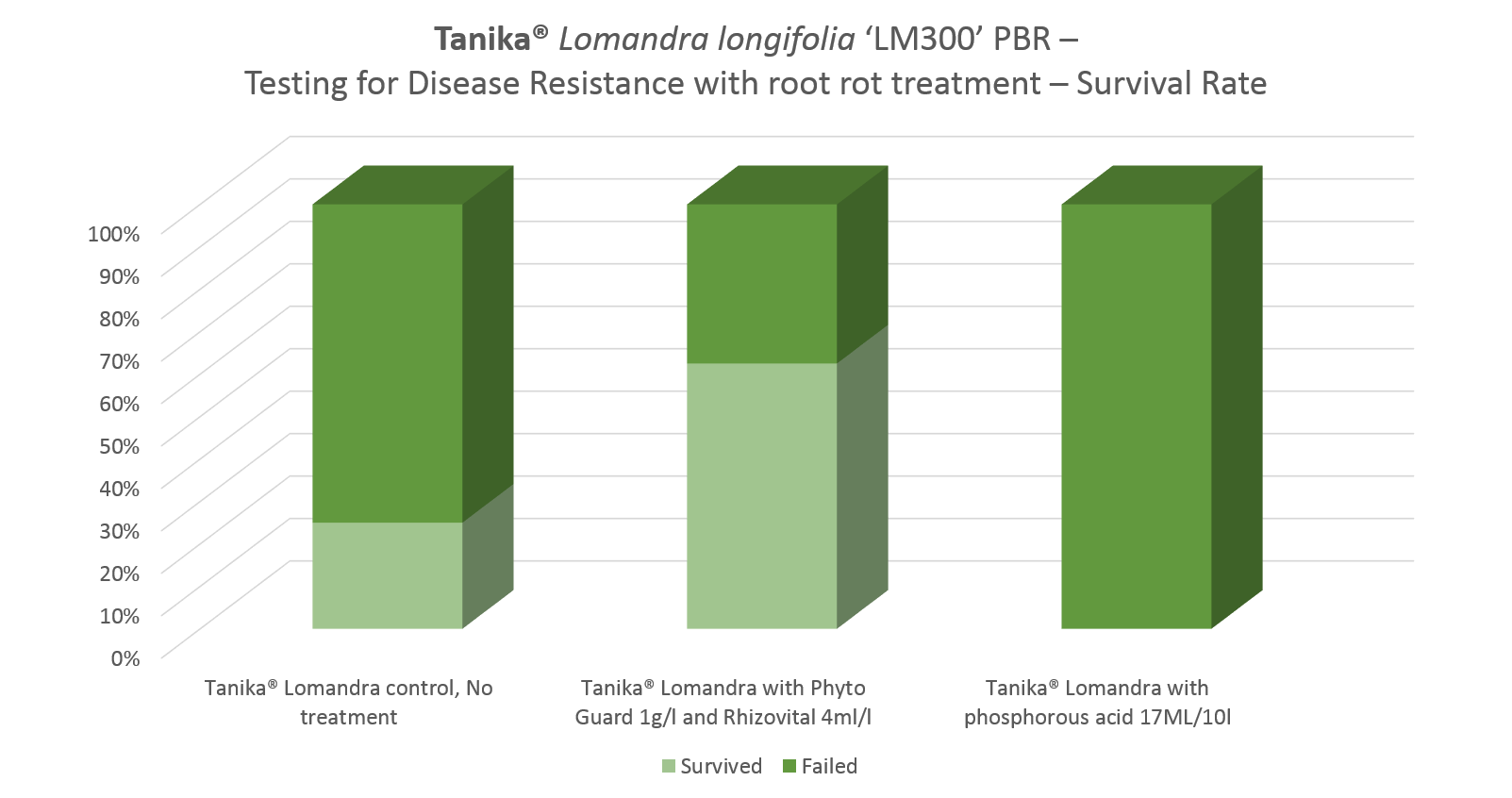
It should be noted that the areas in which these tests were conducted did dry out for periods. They were not permanently wet, but periodical wet and dry, for periods of days or weeks.
When wet they were very saturated in the heavy clay fine silt type soils, further accentuated by the lower elevation, and summer irrigation of the Liriope in-ground production beds above.
These trials do not replicate soils that don’t dry out. Eg; wetlands, permanently saturated soils.
Based on this study, Landscape professionals can utilise Lomandra that are more reliable in their landscape creations.
This information Is important for all plantings other than slopes or raised gardens, providing a buffer from root rot problems associated with many modern landscapes.
For full details of the trial, download the PDF file below.
Evaluating many Lomandra types for wet feet tolerance and reliability | 4.4MB
Click here to find out more about Shara™ Lomandra’s performance during the recent floods at Ozbreed
Want to know more about why Evergreen Baby™Lomandra is Ozbreed’s New star! Click Here


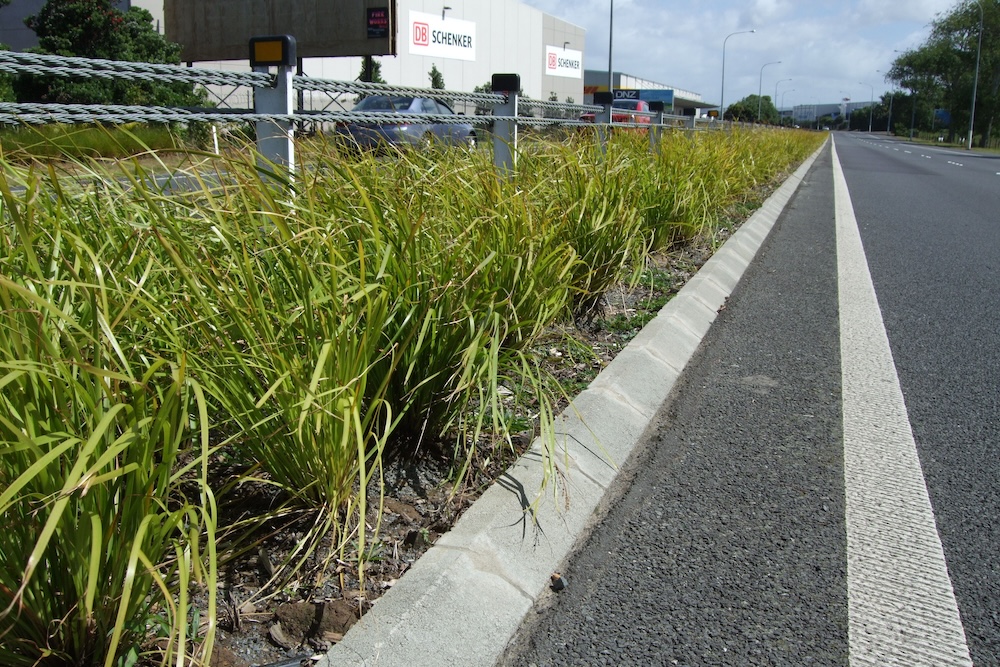
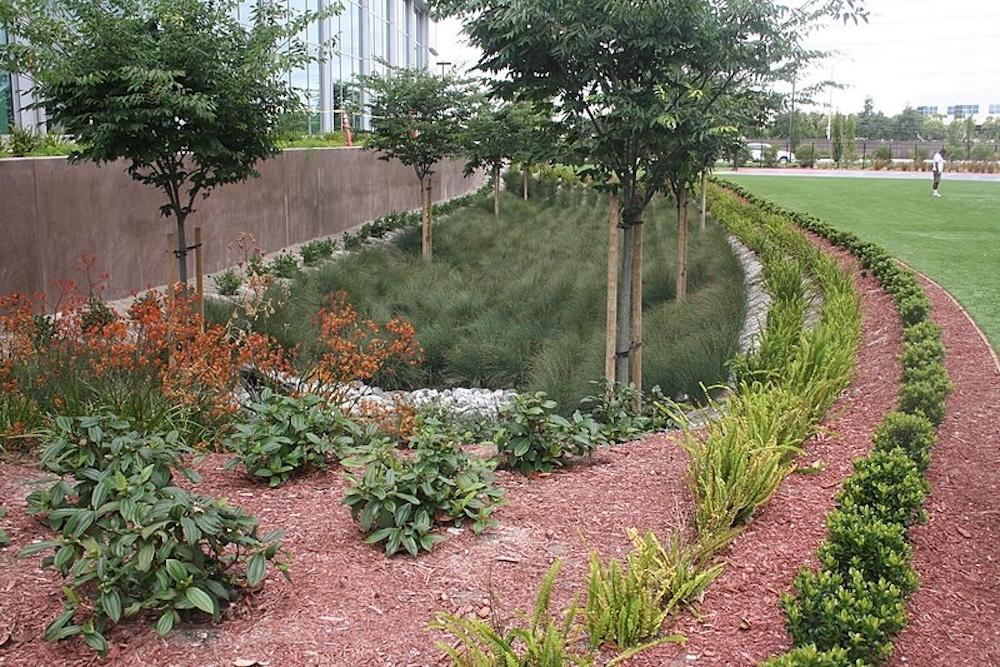
This Post Has 0 Comments